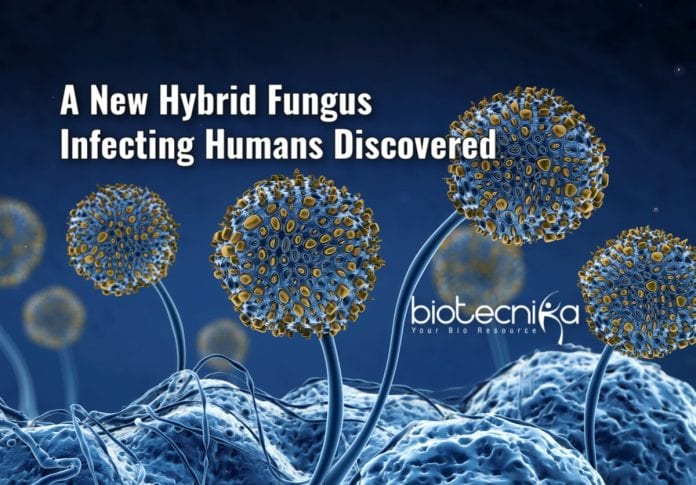New Hybrid Fungus That Infect Humans Discovered
From the mythical minotaur to the mule, creatures created from merging two or more distinct organisms – hybrids – have played defining roles in human history and culture. Now the evolutionary biologists at the Vanderbilt University and Gustavo Goldman’s team at São Paulo University in Brazil have discovered an Aspergillus hybrid fungus that infects humans. This is the first known example of a hybrid mold infecting humans.
Gustavo Goldman’s team at São Paulo University in Brazil and the researchers at Vanderbilt University had been collecting samples of fungi from patients infected with different species of Aspergillus molds for the last few years. They were particularly interested in Aspergillus nidulans, generally harmless but a common fungus.
Aspergillus fungus is generally identified by examining cultures of fungi under the microscope. But closely related species of Aspergillus can also look very similar in physical appearance or in their broad morphology when viewing under a microscope.
So the researchers decided to analyze the genome or genetic content of A. nidulans to study their varying abilities to cause disease. And they were surprised by the results. They had collected Aspergillus latus, instead of A. nidulans. Aspergillus latus is
a close relative of A. nidulans, and they soon found out that its a hybrid species of two other Aspergillus species, an unknown close relative of Aspergillus quadrilineatus and Aspergillus spinulosporus.
Thus they found that the patients were infected with an entirely different Aspergillus species, and it was the first-ever Aspergillus hybrid species found to infect humans.
Hybrid fungi that cause infections in humans like candidiasis and cryptococcosis are common among yeast species. Although yeast hybrids are known for infecting humans, A.lactus is the first of molds known for causing diseases.
It remains unknown why certain Aspergillus species are deadly while some others are harmless. This could be due to the combination of traits from the parent species. The hybrids can reflect the traits of both parents or be more similar to one of the parents or may differ from the parents. Their evolutionary success, including their ability to cause disease, is facilitated by this mix of traits from parental species.
The origin of an Aspergillus hybrid
Hybrids emerge from multiple evolutionary paths. One path is through the merging of genetic material from cells of different species, and another path is through the mating of species, just like donkey and horse mate to create mule.
This particular fungus has taken the first path. A. latus has twice the genome size and number of genes compared to the parent species. And A. latus has the ability to reproduce asexually and sexually, unlike other hybrids, which are often sterile like a mule.
How A. latus differs from its parents
The researchers compared the genome of the parent species and discovered the parents are 93% genetically similar, just like humans and lemurs. So A. latus is a fungal equivalent to human lemur hybrid.
Studying how closely related fungal pathogens differ from each other is a key step towards managing the fungal disease. For example, a. latus is three times resistant to the most common antifungal drug, caspofungin, compared to the A. nidulans species. So the accurate identification of the Aspergillus pathogen behind the infection is essential.
They also discovered that A. latus is trickier for our immune system to identify and destroy, compared to A.nidulans.
There had been studies that showed a fraction of COVID-19 patients is also infected with Aspergillus. And this secondary infection can worsen the clinical outcomes of patients infected with the novel coronavirus. So it becomes more urgent to understand the Aspergillus pathogens during this pandemic period.
However, due to the lack of systematic testing, very little is known about Aspergillus infections in COVID-19 patients, and none of them were identified to be the hybrid species.



























